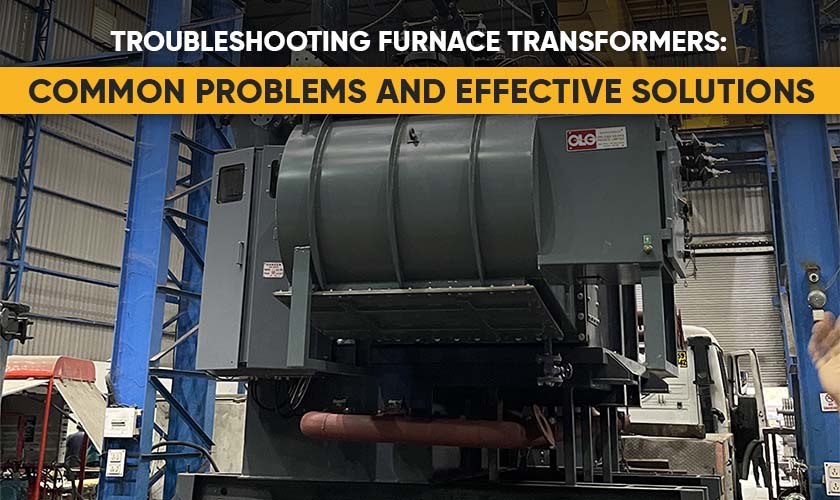Essential Components Guide by Makpowers
Transformers are vital to the functioning of our modern electrical systems. From powering homes and offices to keeping industrial machines running smoothly, transformers are everywhere. But have you ever wondered what materials are used to build a transformer and how each component plays a role in making the device work efficiently?
At Makpowers, we design and manufacture high-quality transformers using materials that ensure maximum efficiency, safety, and durability. In this guide, we’ll take you through the key components of a transformer, the materials used to make them, and why these choices matter.
1. Core: The Magnetic Pathway
The core is the central part of a transformer. It forms the magnetic circuit that enables energy transfer between the primary and secondary windings through electromagnetic induction.
Materials Used:
Grain-Oriented Silicon Steel: This material is widely used due to its low energy loss and high magnetic permeability.
Amorphous Steel: Used in energy-efficient transformers, this material has lower core losses compared to silicon steel.
Importance:
The type of core material directly affects the transformer's efficiency. High-quality core materials help reduce energy losses and heat generation.
2. Windings: The Electrical Conductor
Windings are coils of wire wound around the core. These carry the electrical current and are responsible for transforming the voltage level from input to output.
Materials Used:
Copper: Known for its superior conductivity and mechanical strength.
Aluminum: Lightweight and cost-effective, though slightly less conductive than copper.
Importance:
The quality and type of winding material influence the overall electrical efficiency, heating, and mechanical performance of the transformer.
3. Insulation: Protection Against Electrical Faults
Insulation plays a vital role in preventing electrical short circuits and protecting both the transformer components and the users.
Materials Used:
Insulating Paper and Pressboard: Used between winding layers.
Epoxy Resin and Varnishes: Coated on windings for added insulation and moisture protection.
Heat-Resistant Films: Such as Nomex and Mylar for high-temperature applications.
Importance:
Proper insulation prevents breakdowns, extends transformer life, and ensures safety under high-voltage operations.
4. Transformer Oil: Cooling and Insulating Medium
In oil-filled transformers, transformer oil serves two purposes: it acts as an insulator and helps cool the internal components.
Types of Oil:
Mineral Oil: Most commonly used due to its excellent insulating properties and affordability.
Silicone-Based Oil: Suitable for fire-prone or indoor environments.
Natural Ester Oil (Bio-Based): An eco-friendly, biodegradable alternative for green energy applications.
Importance:
Transformer oil reduces temperature, prevents oxidation, and protects insulation from thermal stress.
5. Tank: The Protective Enclosure
The tank is the outer shell of the transformer that houses all internal components, including the core, windings, and oil.
Materials Used:
Mild Steel and Stainless Steel: Chosen for strength, durability, and corrosion resistance.
Surface Coatings: Such as powder coating or anti-rust paint for outdoor durability.
Importance:
The tank protects the transformer from environmental elements, mechanical damage, and moisture intrusion.
6. Bushings: High-Voltage Connectors
Bushings are components that allow conductors to pass safely through the transformer tank while providing electrical insulation.
Materials Used:
Porcelain: Traditional and durable, commonly used in outdoor applications.
Epoxy Resin: Modern, compact, and suitable for indoor transformers.
Importance:
Bushings must be strong enough to handle high voltage without allowing arcing or leakage.
7. Tap Changer: Voltage Control Mechanism
A tap changer is used to adjust the transformer's voltage ratio to match load requirements or voltage fluctuations.
Types:
Off-Load Tap Changer: Requires the transformer to be switched off during adjustments.
On-Load Tap Changer (OLTC): Can adjust voltage without disconnecting the load.
Materials Used:
Copper Contacts
High-Strength Insulating Materials
Importance:
Tap changers enhance transformer performance and maintain voltage stability in varying load conditions.
8. Cooling Systems: Heat Management
Transformers generate heat during operation, and cooling systems are essential for maintaining performance and safety.
Types:
Natural Air Cooling (AN)
Oil Natural Air Natural (ONAN)
Forced Air or Forced Oil Cooling (OFAF or ONAF)
Cooling Materials:
Cooling Radiators and Fins: Made from Aluminum or steel to increase heat dissipation.
Cooling Fans and Pumps: For larger transformers requiring forced cooling.
Importance:
Overheating can lead to insulation failure and reduce the transformer's lifespan.
9. Gaskets, Fasteners, and Accessories
Small components such as gaskets, fasteners, and valves may not stand out, but are critical to the overall structure and operation.
Materials Used:
Rubber or Neoprene Gaskets: For sealing and preventing oil leaks.
Steel Fasteners: For structural integrity.
Breathers with Silica Gel: To prevent moisture entry into the transformer.
Importance:
These components ensure mechanical stability, prevent environmental damage, and extend transformer service life.
Final Thoughts: Built for Performance, Backed by Makpowers
A transformer is more than just a metal box. It is a complex system made up of carefully selected materials, each contributing to its performance, safety, and durability. The choice of material impacts everything from efficiency and lifespan to safety and cost.
At Makpower Trans-Systems Private Limited, we take pride in building transformers using only high-quality, certified materials. From the core and windings to the oil and insulation, every part is selected with precision and assembled with care by our expert engineering team.
Why Partner with Makpowers?
- High-grade core and winding materials.
- Industry-certified insulation and cooling systems.
- Custom-built tanks and bushings for your unique needs.
- Eco-friendly and energy-efficient options available
- Reliable customer support and on-time delivery
Contact us today to discuss your transformer requirements and experience the difference of working with a manufacturer that values quality, safety, and long-term performance.





